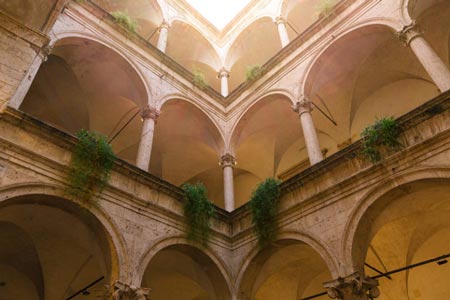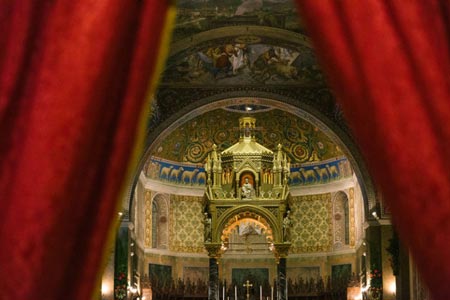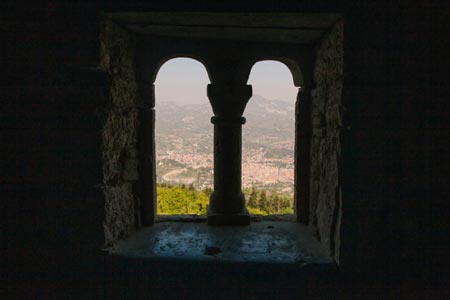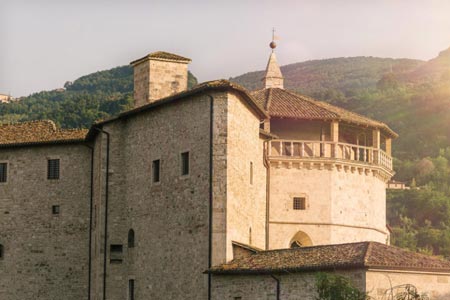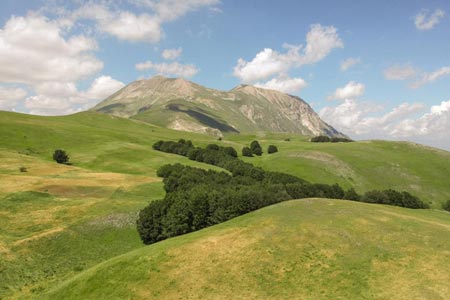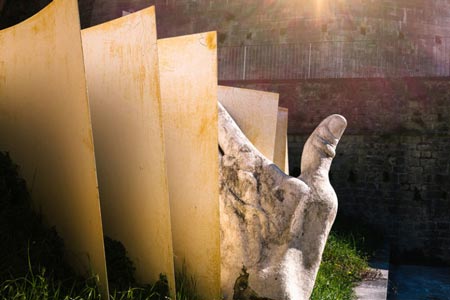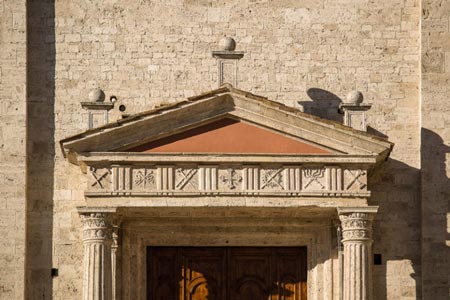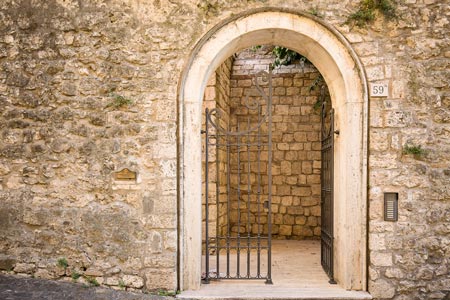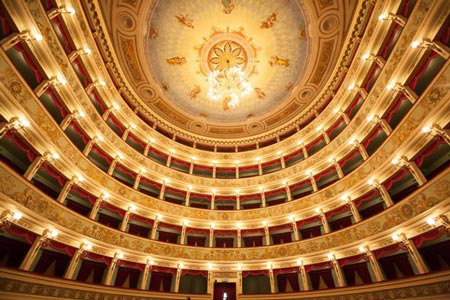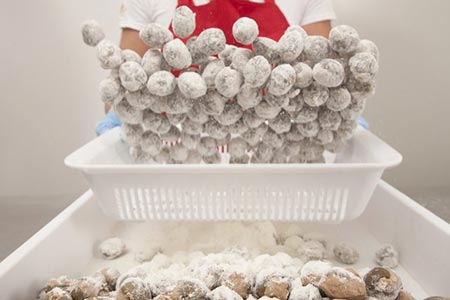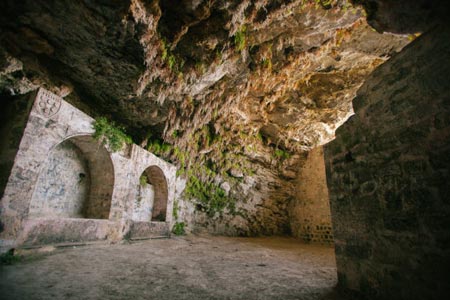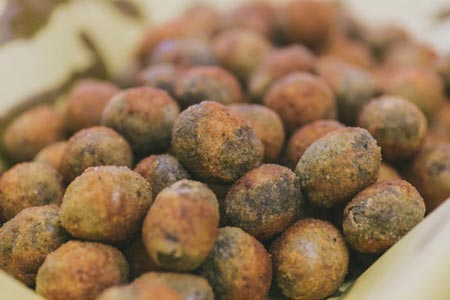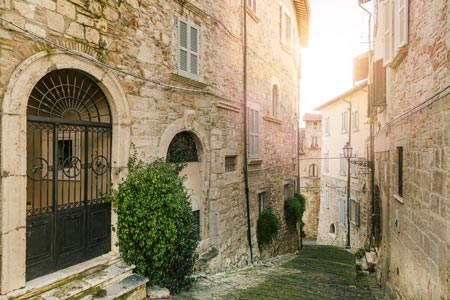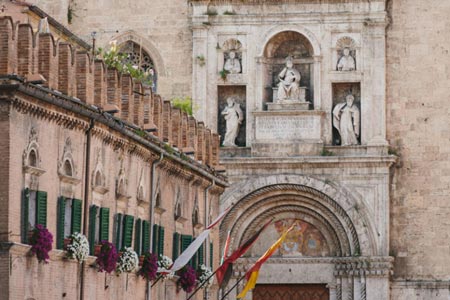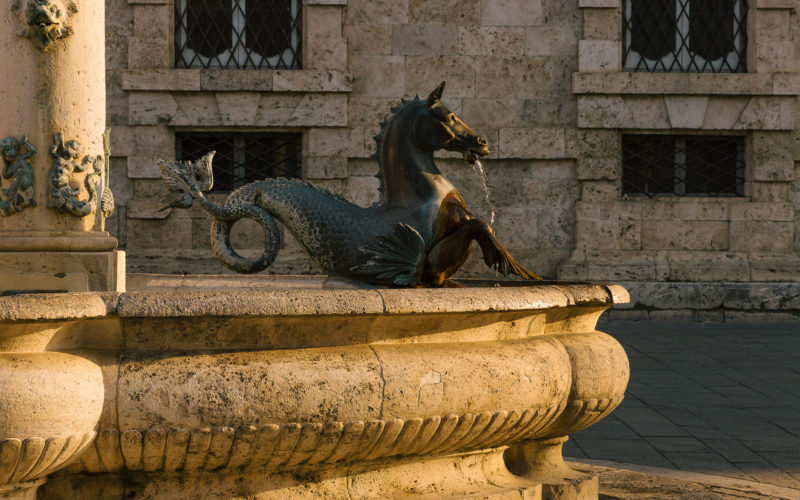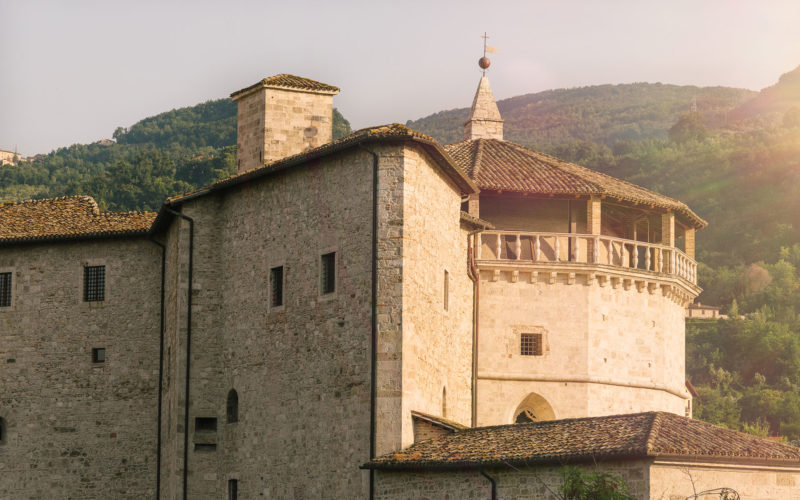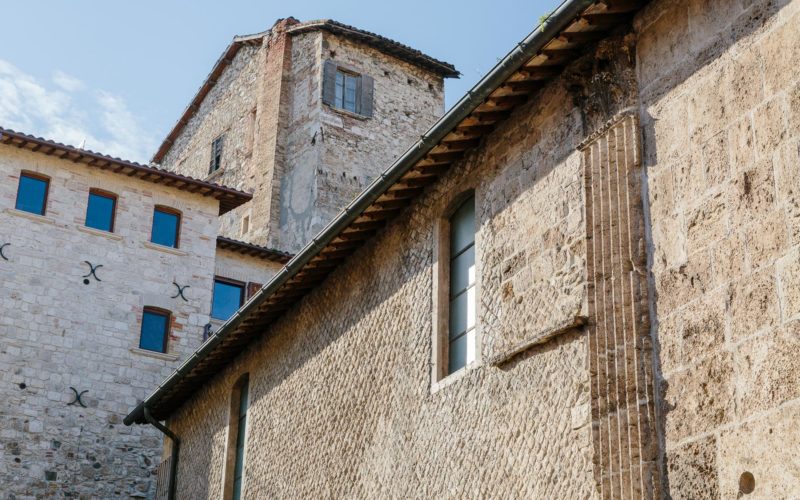Must-see sites in Ascoli Piceno: Ventidio Basso square
In Ascoli Piceno, Ventidio Basso square, the former medieval “Platea inferior” (lower stalls area), so-called to distinguish it from the “Platea superior” (upper stalls area today’s Piazza del Popolo), was once a manufacturing market.
The square was the ancient city’s crucial point. The natural access for those arriving in Ascoli Piceno after having crossed the Roman Porta Solestà’s bridge. A commemorative plaque, attached to the north wall of the Church of S. Pietro Martire, indicates the “gabelles”, nothing else that taxes on products, reminding us that the textile handicraft market took place here.
In the square’s center stands the Church of Ss. Vincenzo and Anastasio, dedicated to two saints remembered by the Church on the same day (January 22nd) but who lived in different areas and ages. San Vincenzo, a Spanish martyred in the 4th century, and Sant’Anastasio, a Syrian martyred in the 7th, both prominent representatives of Christian universalism. At the main entrance, the lunette’s inscription recalls that the church was renovated in 1306 by Prior Bonaventura.
He built the new facade dividing it into 64 squares (typical Umbrian and Abruzzese architecture), and he incorporated the tower. The tower was originally exterior, with a covered square porch at the base, and today it is a sacristy. In the same year rises the left side of the new church.
Another inscription on the right flank is about its construction, which took place several years later (1389) by the will of another prior, Saladino di Matteo. The interior is divided into three naves by solid arches supported by square pillars, and the ceiling has maintained the trussed roof. The presbytery is above the church plane. The double-arched window lights up the central nave, which ends with a circular apse inside but polygonal on the outside.
From the two stairways that open at the beginning of the apse, you can get access to the two rooms crypt: The main room has a ceiling called “a cappuccina“, originally completely decorated with a pictorial cycle based on the “Story of St. Sylvester among lepers” (largely damaged and preserved today in the Diocesan Museum). Inside the main room, after the stepped entrance, there is a small well for the immersion of the feet into believed miraculous water. The same wellspring water resurfaced in the adjacent room, which is lower and divided from the first one by a large travertine column.
CONDIVIDI I TUOI SCATTI CON GLI HASHTAG: #visitascoli #ascolipiceno2024
AUTHOR: Lella Palumbi, expert in art history
